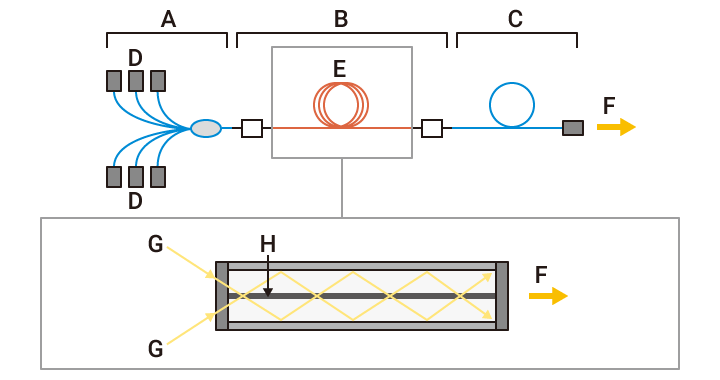Fiber (Yb fiber) laser welding
A fiber laser is a type of solid-state laser that uses an optical fiber as the medium.
The amplification fiber is an optical fiber called a “double-clad fiber” with a core that is doped with a rare earth element. The output side is also equipped with a low-reflectance mirror, and the incident side is equipped with a high-reflectance mirror.
Oscillation principles
With fiber laser oscillation, the excitation light generated from the exciter first enters the amplifying fiber and propagates through reflections inside the amplifying fiber.
The rare-earth element doped in the core of the amplifying fiber absorbs the excitation light, and electron population inversion occurs between the ground level and the metastable level to emit light.
The emitted light is repeatedly reflected between the high-reflectance mirror and the low-reflectance mirror in the resonance section before being oscillated as a laser beam.
Oscillation principles

- A
- Exciter
- B
- Resonator
- C
- Beam conveyor
- D
- Excitation semiconductor
- E
- Amplifying fiber
- F
- Laser beam
- G
- Excitation light
- H
- Core doped with rare earth element
Characteristics
A fiber laser has a short wavelength and a beam focusing diameter that can be narrowed. The energy density of a fiber laser is significantly higher than that used in laser welding, enabling deep penetration even for highly reflective materials such as aluminum. In addition to welding thin plates and detailed parts, fiber lasers can also be used for welding dissimilar metals. Moreover, the ability to automatically set the beam focus ensures non-contact high-speed welding, making robot welding possible even for intricate locations that were previously impossible.





